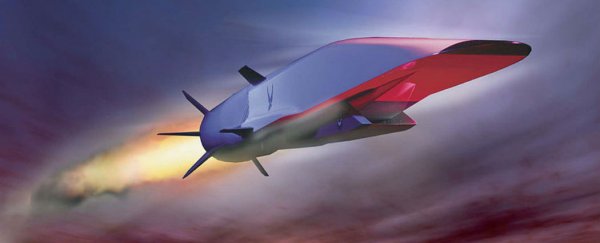Sitting in a standard passenger jet, you're looking at a journey time of at least five or six hours to make it from Los Angeles to New York, but a hypersonic jet being developed by the US Air Force and DARPA (Defence Advanced Projects Research Agency) would do the same trip in just 30 minutes. The Air Force says it hopes to have the jet ready by 2023.
At those kinds of speeds, it's not just engine capacity that's a challenge: plane materials, navigation systems and other key components have to be able to withstand the rigours of hypersonic travel - more than five times the speed of sound. The target is a speed of Mach 5.1, but this research is strictly for unmanned planes. At those speeds, the acceleration is just too much for a human being to withstand.
The new jet is going to build on the work done with the Boeing X-51A Waverider scramjet, which flew in 2013, breaking the world record for a hypersonic flight along the way. At its top speed, it covered 230 nautical miles in just six minutes. Data collected from the jet, which crashed into the ocean as planned, will be used in the development of a superior model.
"X-51 was really a proof-of-concept test," Air Force chief Scientist Mica Endsley told Kris Osborn at Military.com. "It showed that you could get a scramjet engine, launch it off an aircraft and it could go hypersonic. It was able to go more than Mach 5 until it ran out of fuel. It was a very successful test of an airborne hypersonic weapons system."
Now the Air Force has more ambitious plans: a whole fleet of hypersonic jets ready to transport sensors, equipment and weaponry all across the world. The same kind of technology could eventually make its way into missiles that meet their target in a fraction of the time - today's cruise missiles can travel at 965 km/h (600 miles/h), whereas Mach 5 is close to 6,000 km/h (3,800 miles/h), depending on the surrounding conditions and air pressure.
These jets are also less expensive than traditional turbine engines as they require fewer parts, and that combination of faster speeds and a lower cost means the US isn't the only nation exploring the technology: China is also testing out hypersonic engines of its own.
"[Hypersonic weapons] are showing a lot of capability in this area," says Endsley. "The advantage of hypersonics is not just that something goes very fast - but that it can go great distances at those speeds."
As for when you'll be making that coast-to-coast trip in half an hour, don't hold your breath for any short-term developments. While scientists know that the human body can withstand travel at any kind of speed - many astronauts have travelled at hypersonic speed in the past - it's managing the forces of acceleration that are the problem.
